Let's kick things off with 사골만두국 (sagol mandu gook), or mandu soup.
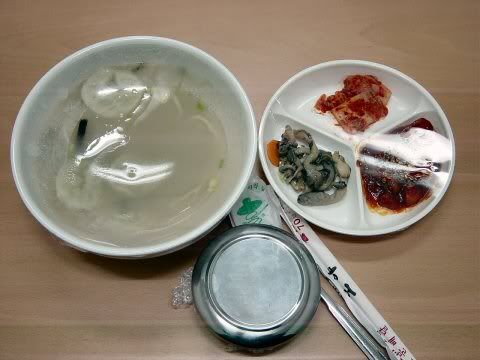
Yes you guessed it, delivery service.
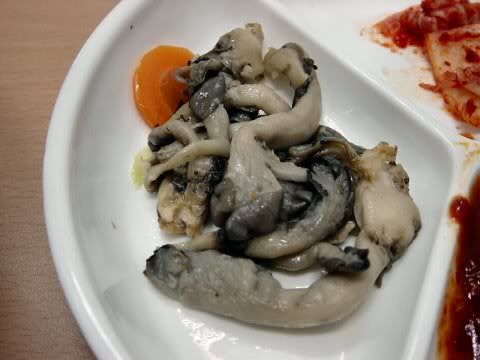
Sauteed mushrooms with sesame oil, sesame seed, garlic and soya sauce.
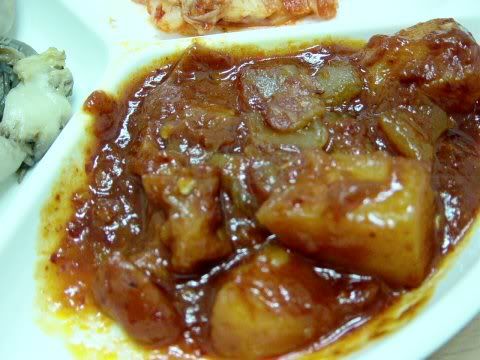
This one is a little different. A sweet and very spicy blend of chili sauce mixed in with strips of odeng (fish cakes), large onions and potatoes. The potatoes are a nice touch. Me like.
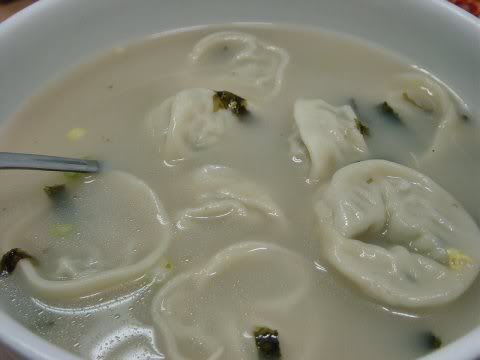
This is the mandu gook, or mandu soup. You get 8 large dumplings swimming in a bowl of soup. Scrape the bottom of the bowl and you'll find chuncky bits of seaweed, garlic, spring onions and beaten egg swirled in. The soup's heavy in garlic overtone and the stock's probably prepared using granulated beef stock. It's OK for a quickie lunch.
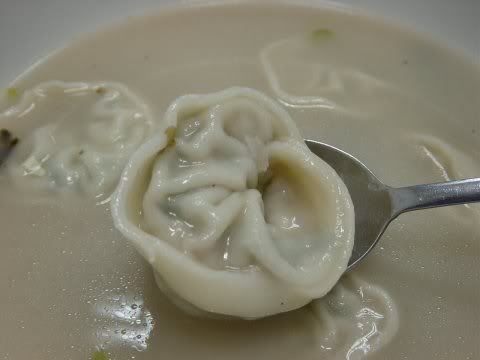
Close-up of the mandu. It kinda resembles a bloated tortellini (Italian), yes?
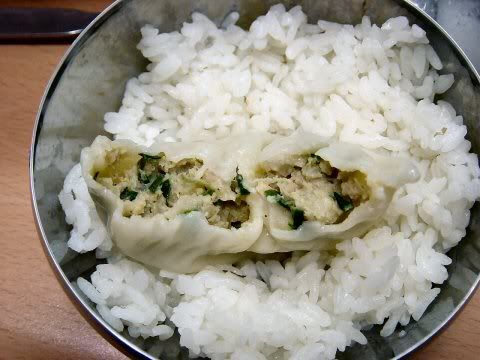
The mandu stuffing is made from minced pork, garlic, onions, spring onions, leek, Korean glass noodles, sesame oil, soya sauce and heavy on the black pepper.
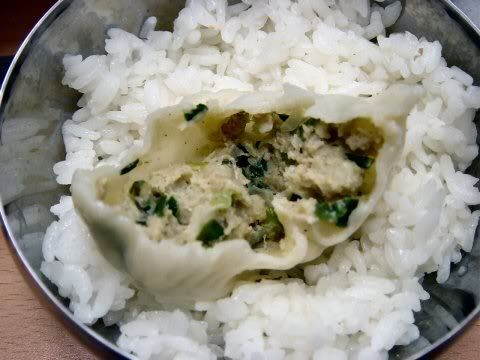
The skin of the Korean mandu is somewhat thicker and chewy than the Japanese gyoza or Chinese wonton. It's still smooth nonetheless. This meal costs KRW5,000.
Next up is 김치만두 (kimchi mandu) and 고기만두 (gogi mandu, or pork dumpling).
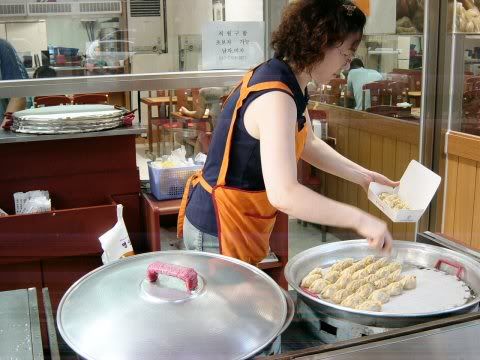
You will usually find the mandu steaming by the walkway, as in the photo above. The guys will be busy in the store doing finger gymnastics folding the mandus.
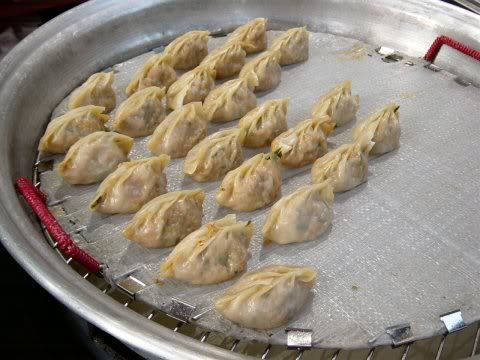
This is a tray of kimchi mandu steamed and ready for sale.
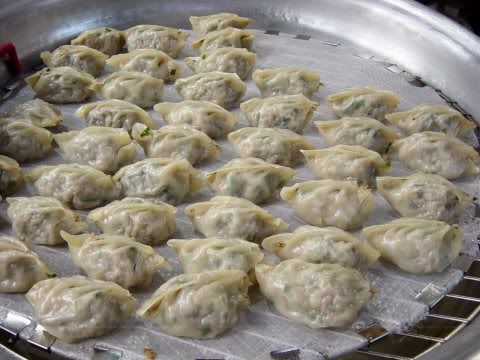
On another tray you'll find the gogi mandu.
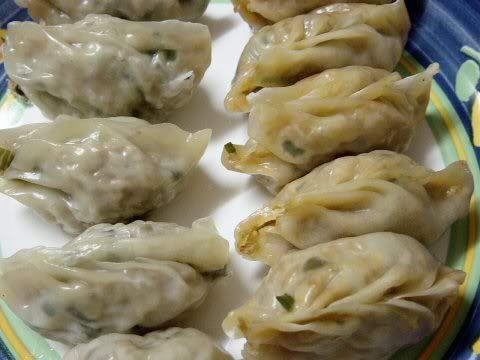
An order of 10 dumplings usually costs between KRW2,500 to KRW3,000. They also do half and half, which is what I had.
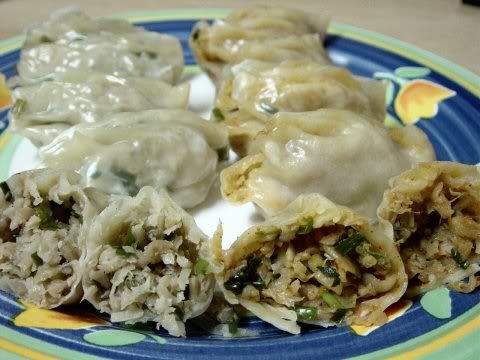
Dissected, the gogi mandu on the left and kimchi mandu on the right.
The basic ingredients are the same for both - the filling is made of finely chopped radish, cabbage, onions, garlic, spring onions, sesame seed and minced pork. The only difference is the kimchi mandu uses radish kimchi with chili whereas the gogi mandu is plain radish cooked in soya sauce and sesame oil. I'm glad this one doesn't have the usual Korean glass noodles.
Next up is 황만두 (hwang mandu). I'm not sure what the "황" (hwang) here refers to. King? Emperor? Gold? For those in the know, would appreciate your help on this. For now, I'll just call it mandu buns, which in essence is what it is.
[ erratum : several readers had rightfully pointed out that the corrent name should read "왕" (wang) and not "황" (hwang) - so the correct name is "왕만두" (wang mandu) ]
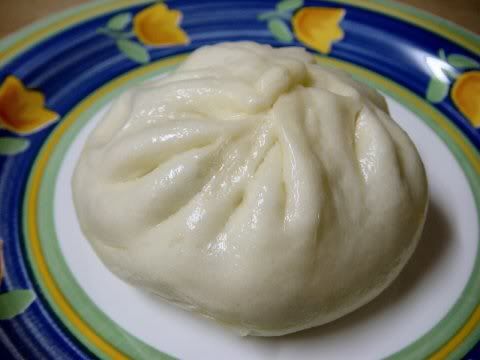
Some of you would have recognise the similarity between the hwang mandu to the Chinese bao (steamed buns) served at dim sum sessions. The bread-like skin is identical to their Chinese counterpart. It's soft and light and best eaten hot off the steamer.
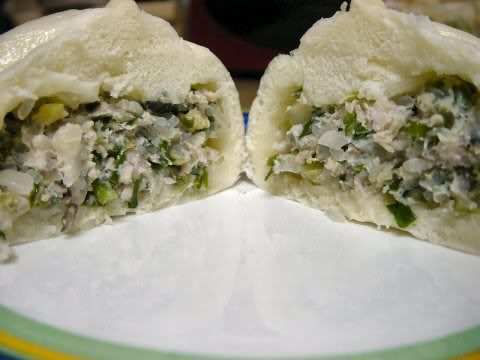
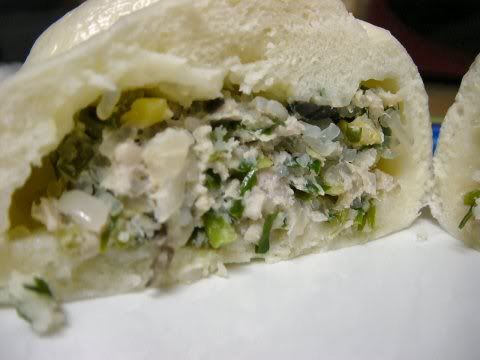
As you pretty much get the idea by now, the filling is made from minced pork, radish, cabbage, spring onions, leek, Korean glass noodles, garlic, onions and chopped bean sprouts.
And finally, let's talk about 군만두 (goon mandu) or fried mandu. You can pick these packs up at any supermarket. They sell them by the truckloads daily.
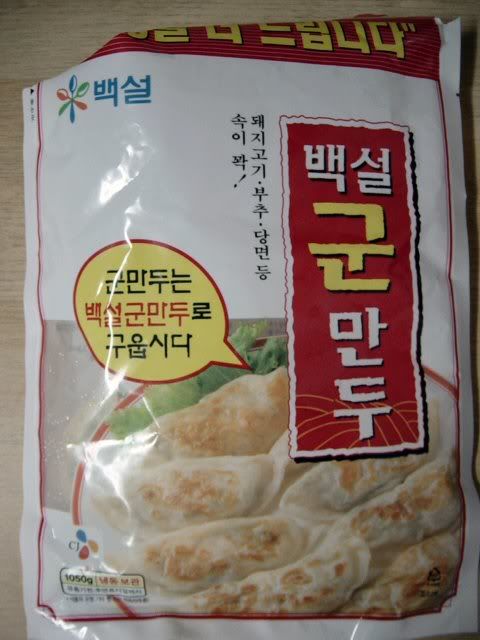
A large 1 kg pack like this costs about KRW5,000 per pack. It contains approx. 40-50 dumplings.
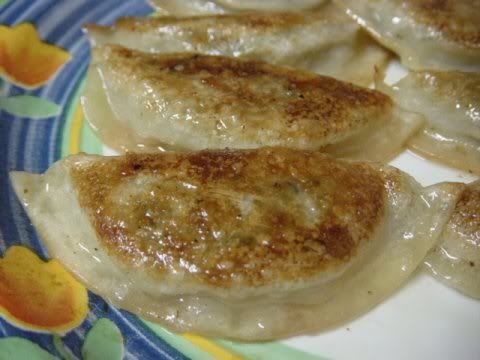
I usually add a little water and cook the water dry towards the end of the frying process to soften the skin.
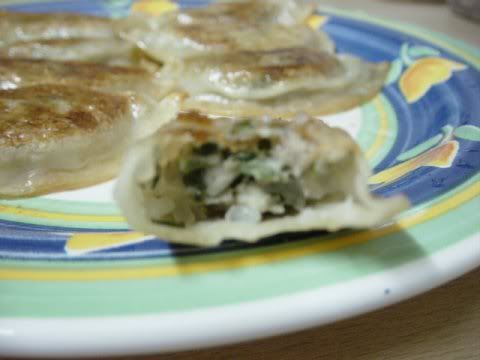
The stuffing is pretty standard with minced pork (I hope!), Korean glass noodles, spring onions, garlic and leek. (sorry for the poor close-up shot)
Recently, demand for such prepacked mandu has declined significantly since the mandu scandal broke. But rest assured that mandu is here to stay - it's as Korean as it gets.
___________________________________________________________________________
Reader Catherine of Las Vegas wrote me a long e-mail and I'm just happy she's enjoying the blog. She asked that I cover mandu as it's her favourite, so the above post goes out to you. Hope you enjoyed it.
No comments:
Post a Comment